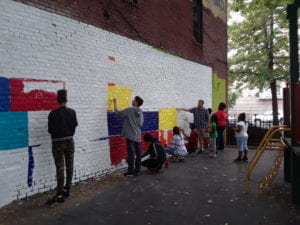In addition to presenting facts and data, my research project explores the dynamics between residents of the Southern Boulevard area and the City, as well analyses WHEDco’s role as an advocate and a mediator. Understanding the role of each of these three stakeholders and their position in a dispute is an integral part of the community needs assessment. In this assignment I will explain WHEDco’s role in the advocacy realm and briefly talk about the book that will help me unravel the current dispute between the Bronx community the Department of City Planning (DCP).
WHEDco provides various community development services in the Bronx as well as contributes by a large share of affordable housing in the area. Providing community services often require collaborating with municipal authorities, funding agencies, and other government institutions, in order to facilitate their implementation. These collaborations are dialogic in nature and WHEDco is often the voice of the South Bronx Community. Although the assessment allows WHEDco to accurately advocate for the community’s needs, it does not guarantee that the city will choose to respond to the most pressing needs among them.

As the local community continues to advocate for their right to make decisions regarding the DCP’s developing, it is essential to empower the community’s position in WHEDco’s dialogue with the city. WHEDco’s negotiation efforts goes beyond representing the community in the city council. It empowers residents and business owners by claiming their right for public and communal spaces in the neighborhood. This is achieved by providing streetscape elements and organizing events that increases the community’s spatial share of the neighborhood. (Photo: Children participating in WHEDco’s mural painting project in Goble Playground)
In his book “Dealing with Differences: Dramas of Mediating Public Disputes”, John Forester uses examples of complicated disputes across the US to explain the process of mediation in planning and policy making. John is a scholar on the micro-politics of planning and is a professor at Cornell University where he teaches Urban and Regional Planning. He published this book in 2009 as a sequel for two books on the same topic published in the 1990s. As the book lays out the process of mediating disputes, I will interpret this process in my research from a spatial perspective, as well as analyze how street elements and design regulations can alter the dialogue between the community and the government.

So I guess the question is: How much does WHEDco truly represent the needs and desires of the Southern Boulevard neighborhood and how much do residents there trust WHEDco to represent their needs? This is one of the many tricky parts of participatory planning and/or citizen participation and deliberation in large-scale urban policies. How does a community’s needs get expressed? Is it done through representation? Who does the representation and is that entity competent to do its job democratically? What mechanisms exist for citizen participation and how transparent are they? It would be interesting to see how Southern Boulevard residents view WHEDco in general.